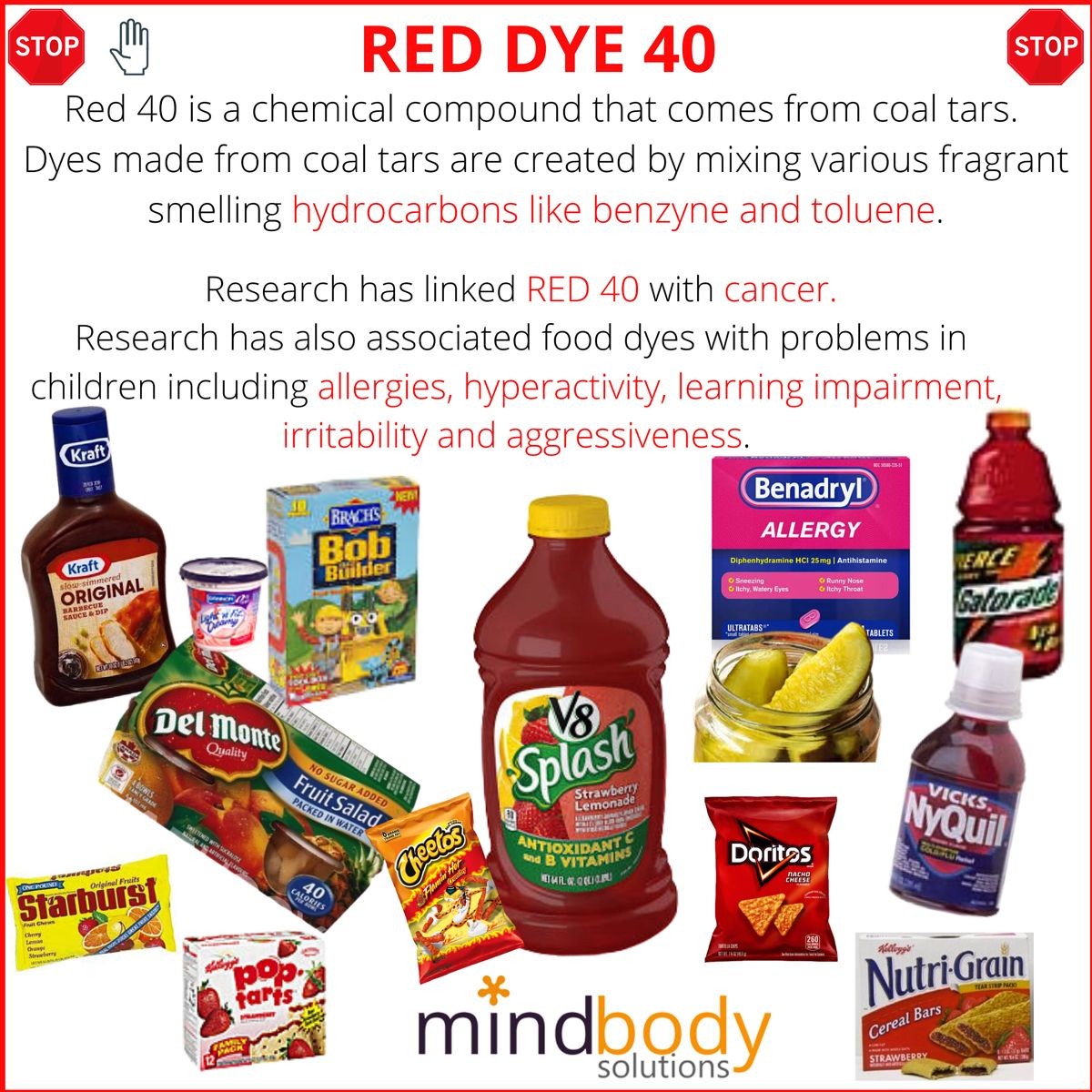
Is Red Dye 40 Still Used in Food, and What Does Red Dye 40 Do to Your Body?
Red dye 40 is a synthetic coloring used in foods and drinks to make them brighter and more appealing. While FDA approved, some people notice behavioral changes in children after consuming red dye 40.
If your child has ever acted out after eating candy, you may have wondered if red dye 40 was the cause. Many believe that sugar, food dyes, and additives can lead to hyperactivity and outbursts in kids.
Does this explanation hold true, or is it merely a convenient myth?
Discover more about red dye 40, an FDA-approved artificial food coloring, and decide whether you and your children should consume foods containing this chemical.
Red dye 40 is a synthetic coloring used in food to enhance appearance. The FDA certifies its safety and includes it on a list of approved food coloring agents.
Other additives on this list can be found in candy, cereal, pastries, ice cream, and yogurt. You may recognize names like "FD&C Blue No. 1" or "Orange B" on nutrition labels.
Although red dye 40 is deemed safe, many worry about consuming it in large quantities over a lifetime. Parents suspect that additives like these may cause hyperactivity in children, and individuals with chronic diseases are concerned about the impact of synthetic dyes on their health.
What happens when you consume red dye 40?
The FDA states that synthetic food coloring is generally safe, but some studies suggest that food dye may be problematic for certain children. In contrast, many European countries use natural coloring like fruit juices instead of artificial dyes due to similar concerns.
If you notice behavior changes in your child after consuming red dye 40, consult your doctor. Other countries banning food dyes may raise concerns about the state of food in the US.
To avoid food dye, check the product’s nutritional label. Food dye is listed in the ingredients section, either by name or with a disclaimer like "food coloring added".
Red dye 40 and attention-deficit hyperactivity disorder (ADHD)
Research on the relationship between food dyes and ADHD symptoms is challenging due to evolving diagnostic criteria. While food dye doesn’t cause ADHD, some believe it may affect attention and cause hyperactivity. Elimination diets, such as the Feingold diet that excludes dyes and artificial ingredients, have been reported to alleviate symptoms.
Red dye 40 and cancer
Red dye 40 contains a compound called benzidine, which is labeled as a carcinogen. However, the amount of benzidine in red dye 40 is well below the threshold for cancer concerns. The risk of developing cancer is extremely low.
Red dye 40 and neurological health
A study examining the impact of food dyes on health found that red dye 40 may have the most effect on neurological health. It can potentially disrupt the brain’s regulation of certain neurotransmitters and interfere with the body’s processing of thyroid hormones. It’s worth considering if you have neurological or chronic health conditions, but further research is needed.
Why are synthetic food dyes used?
Synthetic food dyes make food products more colorful and appealing, increasing sales. They may help encourage children to eat yogurt and hidden fruits/vegetables in "fun" foods and take important chewable vitamins.
If you’re concerned about artificial ingredients, you might wonder why food manufacturers don’t use natural alternatives. However, natural color additives like turmeric or carrot juice are costlier.
What is the Feingold Diet?
The Feingold Diet is an elimination diet followed by parents of children with ADHD, autism, and other neurological conditions. It eliminates food dyes like red dye 40 and promotes a "cleaner" way of eating.
Elimination diets help detect food sensitivities that don’t involve the immune system. If considering the Feingold diet, consult a medical professional and remember that cutting out food dyes doesn’t require engaging in an elimination diet.
QUESTION
Which foods might contain red dye 40?
Determining red dye 40 in foods can be challenging as it’s not limited to red-colored products. Common foods containing red dye 40 include cereals, artificially colored drinks, colorful dairy products, dessert items, baked goods, and brightly-colored gelatin products. Beware of bright red or orange store-bought products and check for other types of food dyes in hot dogs, sausages, sauces, and crackers. Natural or organic foods typically don’t contain artificial dyes.
What are alternatives to food dyes and red dye 40?
In response to concerns, many parents worldwide prefer foods without artificial ingredients. While there’s little evidence directly linking food dyes to hyperactivity, you can stop consuming food coloring if you suspect a negative impact. Look for natural ingredients and monitor symptoms. Before engaging in an elimination diet, consult with a doctor to ensure proper nutrition.
Sources: Children’s Hospital Colorado, Environmental Health Perspectives, Environmental Protection Agency, The Feingold Association, National Public Radio, Office of Environmental Health Hazard Assessment, U.S. Department of Agriculture, U.S. Food & Drug Administration.


